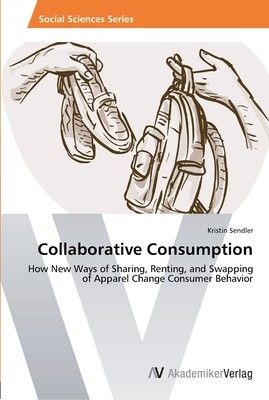
- We will send in 10–14 business days.
- Author: Kristin Sendler
- Publisher: AV Akademikerverlag
- Year: 2013
- Pages: 120
- ISBN-10: 3639465334
- ISBN-13: 9783639465334
- Format: 15.2 x 22.9 x 0.7 cm, softcover
- Language: English
- SAVE -10% with code: EXTRA
Reviews
Description
This research paper explores the subject of collaborative consumption with focus on Canadian and German consumers. It provides an overview of collaborative consumption in the U.S., Canada, and Germany. Advantages and disadvantages are compared. The author then focuses on the apparel market in the respective countries. Different types of collaborative apparel consumption and clothing swap business models are discussed. The researcher draws up the hypothesis that although collaborative clothing consumption seems to be dependent on population density, consumers in urban and rural areas are equally interested in changing their shopping behavior. This hypothesis is proven with a survey that was conducted in Canada and Germany. A clothing swap experiment in Kelowna, B.C. explored the potential success of apparel swap businesses in Western Canada. It was a successful event relative to other Canadian swap events in major metropolitan areas, even though the critical mass of apparel items that would have satisfied every attendee could not be generated. The conclusion of this research: in regards to numbers of items sold, resold, or exchanged, this trend will presumably not surpass traditional ways of apparel consumption anytime soon. However, the popularity of collaborative apparel consumption is increasing and consumers in rural as well as urban areas are interested in participating.
EXTRA 10 % discount with code: EXTRA
The promotion ends in 20d.19:52:43
The discount code is valid when purchasing from 10 €. Discounts do not stack.
- Author: Kristin Sendler
- Publisher: AV Akademikerverlag
- Year: 2013
- Pages: 120
- ISBN-10: 3639465334
- ISBN-13: 9783639465334
- Format: 15.2 x 22.9 x 0.7 cm, softcover
- Language: English English
This research paper explores the subject of collaborative consumption with focus on Canadian and German consumers. It provides an overview of collaborative consumption in the U.S., Canada, and Germany. Advantages and disadvantages are compared. The author then focuses on the apparel market in the respective countries. Different types of collaborative apparel consumption and clothing swap business models are discussed. The researcher draws up the hypothesis that although collaborative clothing consumption seems to be dependent on population density, consumers in urban and rural areas are equally interested in changing their shopping behavior. This hypothesis is proven with a survey that was conducted in Canada and Germany. A clothing swap experiment in Kelowna, B.C. explored the potential success of apparel swap businesses in Western Canada. It was a successful event relative to other Canadian swap events in major metropolitan areas, even though the critical mass of apparel items that would have satisfied every attendee could not be generated. The conclusion of this research: in regards to numbers of items sold, resold, or exchanged, this trend will presumably not surpass traditional ways of apparel consumption anytime soon. However, the popularity of collaborative apparel consumption is increasing and consumers in rural as well as urban areas are interested in participating.


Reviews